Waste Fume Scrubbers: Unsung Heroes in the Fight Against Air Pollution
Waste Fume Scrubbers: Unsung Heroes in the Fight Against Air Pollution
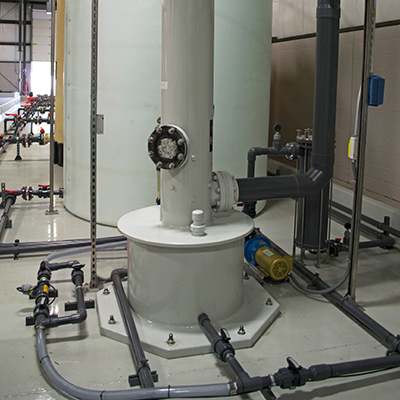 Salco Products manufactures top-quality waste fume scrubbers designed primarily to capture the vapors of specific Chlor-Alkali compounds, helping protect the health and safety of workers and the environment. But aside from the systems we manufacture for our rail freight partners, many other industries employ different types of scrubbers created specifically for their applications. In this article, we will take a closer look into how these systems effectively clean all kinds of nasty things out of the air we breathe.
Salco Products manufactures top-quality waste fume scrubbers designed primarily to capture the vapors of specific Chlor-Alkali compounds, helping protect the health and safety of workers and the environment. But aside from the systems we manufacture for our rail freight partners, many other industries employ different types of scrubbers created specifically for their applications. In this article, we will take a closer look into how these systems effectively clean all kinds of nasty things out of the air we breathe.Air pollution has long been a major concern for public health and the environment. One of the key technologies employed to reduce harmful emissions from various industries is the waste fume scrubber. These devices use liquid scrubbing agents to capture and dissolve air pollutants, including those generated from specific Chlor-Alkali processes. Let's take a deeper dive into how these scrubbers work, their various types, and their widespread applications in diverse industries.
The Intricate World of Waste Fume Scrubbers:
Each waste fume scrubber is uniquely designed and operated to match the specific characteristics of the pollutants and the operating conditions of the system. Here's a closer look at the three main types of scrubbers:
Packed Bed Scrubbers:
These scrubbers contain a packed bed of materials, such as ceramic balls or plastic packing, which significantly increases the surface area of liquid in contact with the air. This enhanced surface area allows for more effective pollutant capture and dissolution. Packed bed scrubbers are particularly efficient in dealing with volatile organic compounds (VOCs) and hazardous air pollutants (HAPs).
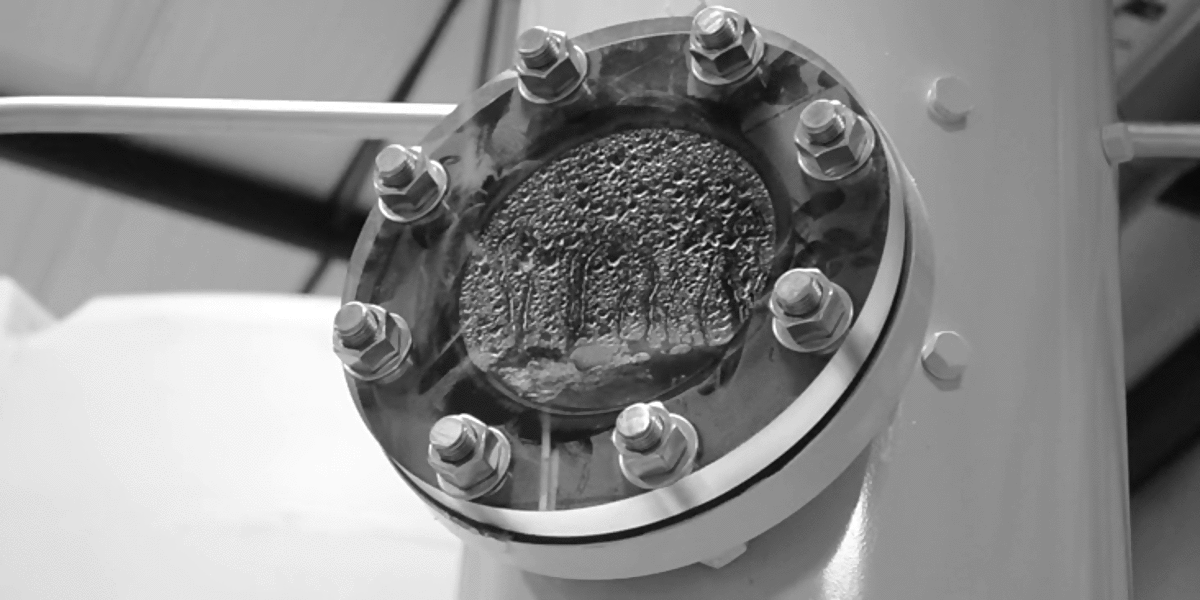
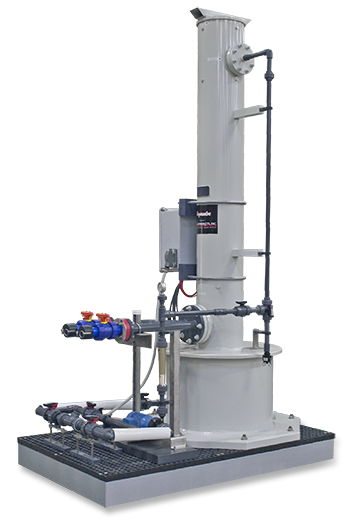
Venturi Scrubbers:
Venturi scrubbers utilize a clever design feature - a narrow constriction within a tube - to increase the air velocity. This design creates a suction effect that draws pollutants into the liquid scrubbing agent, where they are subsequently dissolved or trapped. Venturi scrubbers are especially adept at handling particulate matter, making them a popular choice for industries producing dust or other fine particles.
Tray Tower Scrubbers:
These scrubbers employ stacks of horizontal trays, allowing liquid to run across the tray and form small pools of water. As vapors move upward, the pools help reduce heat and capture pollutants. Tray tower scrubbers are versatile and can handle a wide range of pollutants, including acidic or alkaline gases and particulate matter.
The Aftermath: Scrubber Effluent Management:
The polluted liquid waste collected by waste fume scrubbers, known as scrubber blowdown or scrubber effluent, contains a concentrated mixture of captured air pollutants and any additional chemicals or materials from the scrubbing liquid. Proper handling and disposal of this effluent is critical to comply with environmental laws and regulations. There are several options, depending on the waste characteristics and the regulations specific to the facility:
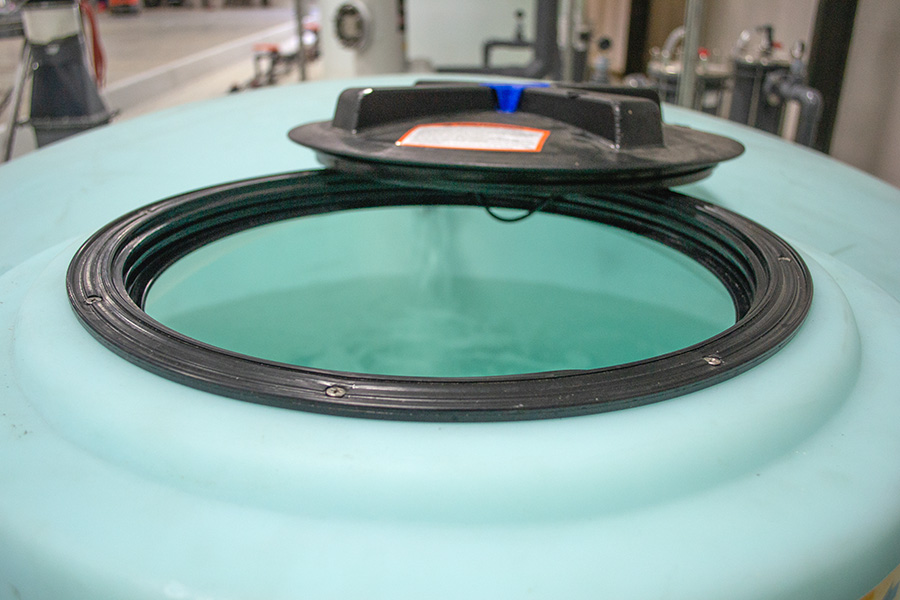
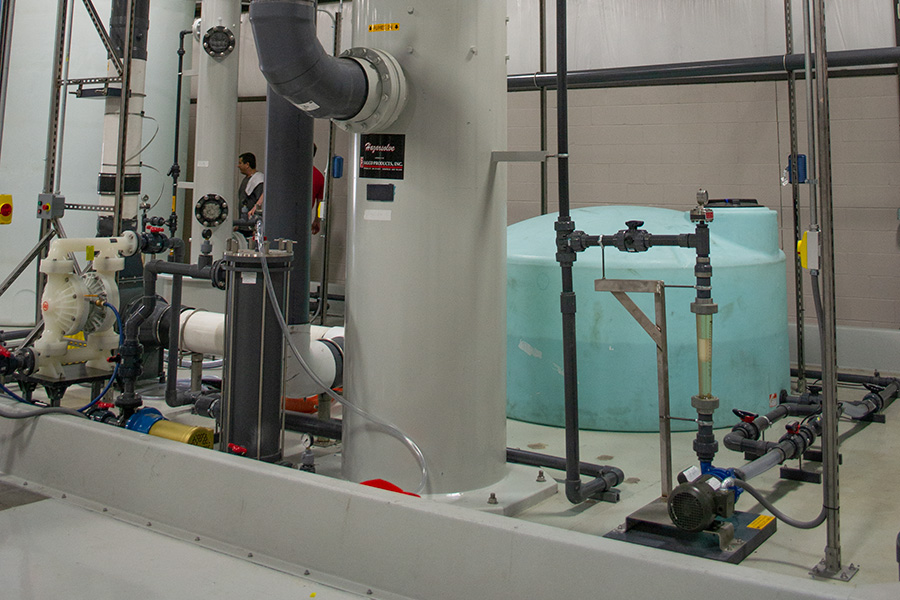
Treatment and Discharge:
Scrubber effluent can typically be treated and safely discharged to a wastewater treatment plant, where it undergoes further treatment before being released into the environment.
On-site Processing:
In some cases, facilities can implement on-site processing systems to remove pollutants and contaminants. The resulting water can then be reused within the facility, thus reducing overall water consumption.
Industries Benefiting from Waste Fume Scrubbers:
The use of waste fume scrubbers is not limited to Chlor-Alkali vapor control. Numerous industries have adopted these systems to manage air pollution and protect public health and the environment. Some examples include:
Pharmaceutical Manufacturers:
Controlling emissions of HAPs and VOCs during drug production processes.
Petrochemical Plants:
Managing the release of toxic and corrosive gases produced during refining and chemical processing.
Paper Mills:
Reducing emissions of sulfur compounds and other odorous pollutants. Steel Mills, Aluminum Smelters, and Coal-Fired Power Plants: Controlling emissions of particulate matter, sulfur dioxide, and other harmful pollutants.
Waste fume scrubbers play a crucial role in mitigating air pollution across various industries. By understanding the different types of scrubbers and their applications, we can better appreciate the vital part they play in safeguarding both public health and the environment.
Learn more about Salco's Waste Fume Scrubber Systems here

